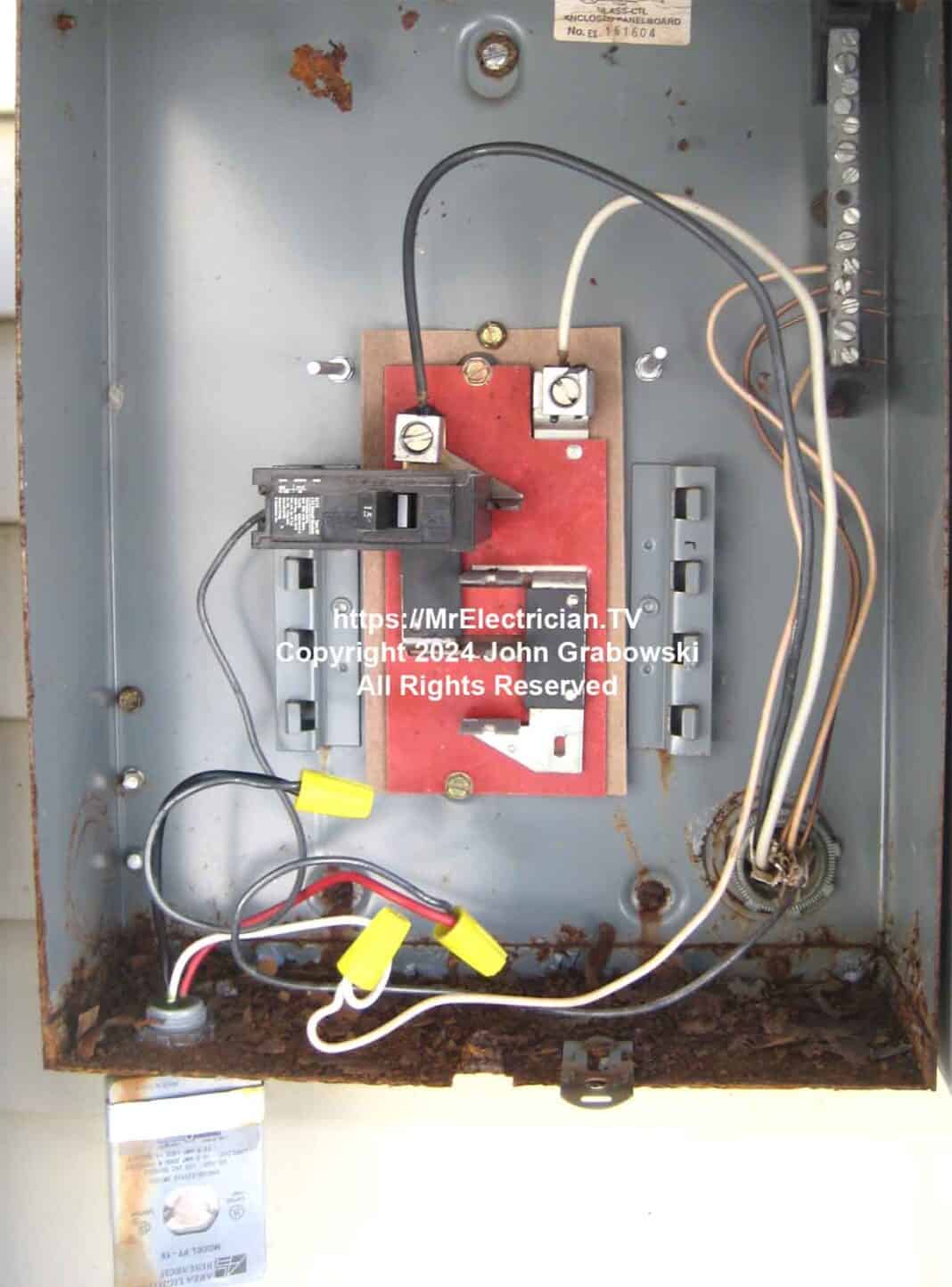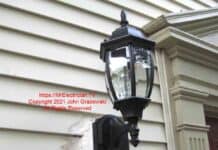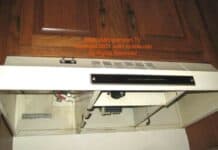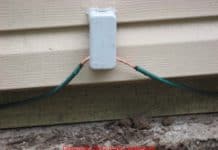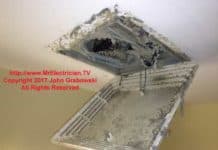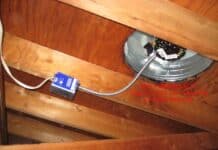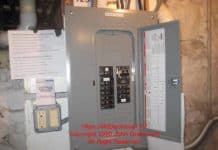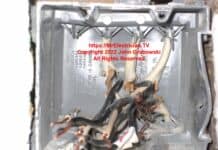Dear Mr. Electrician: I got some phantom voltage readings between neutral and ground with my digital volt-ohm meter while I was changing an outlet in my house. What do I do?
NOTE: Some text links below go to applicable products on Amazon. As an Amazon Associate, I earn from qualifying purchases. Using my links helps to keep this website FREE.
Answer: The term “Ghost” or ” Phantom” voltage often explains abnormal voltage readings using a digital volt-ohm meter on household wiring. I do not believe in “Phantom” voltage readings. I believe the readings are actual voltage in the circuit due to a tiny amount of current leaking to the earth’s ground.
It is important for safety and for the proper functioning of your home appliances to find out what is causing the voltage leak and correct it.
CAUSE OF PHANTOM VOLTAGE
This can happen from some appliances such as older electric dryers or electric range circuits that were originally wired with three conductors instead of the now required four.
When those circuits were installed, the National Electrical Code permitted using the insulated neutral wire (Also known as the grounded circuit conductor) as the equipment grounding conductor. However, in many installations, the bare ground wire was used as the neutral instead. This caused a small amount of current to be added to the grounding conductor. The neutral was needed for the light inside the appliance and maybe the controls.
A three-wire outlet is no longer permitted for new range and dryer installations. Four conductors are required to pass inspection.
Another possible cause of your phantom voltage reading is an electronic switching device such as a wall timer or electronic dimmer. Many of those devices require a neutral conductor to operate. However, many existing wall switches do not have a neutral conductor inside the electrical box to connect to. Consequently, the uninformed installer will connect the ground wire to act as the neutral conductor. Although this will allow the device to operate correctly, it also creates a hazard by adding voltage to the ground.
Some devices were approved to be connected to an equipment grounding conductor under old rules in the National Electrical Code. They are no longer permitted to be installed this way, and the code has been updated to require a neutral conductor in every switch box when installing new wiring.
You can try to identify where the grounding problem is by having someone slowly flip off each circuit breaker one at a time while you monitor the voltage reading with a Category III or IV digital volt-ohm meter. The voltage reading should change when the culprit is turned off.
In our modern society, electronic controls and microprocessors are in just about everything electrically operated. The electronics require very good quality electricity, which your power company supplies. However, things inside of your home can cause that electricity to be less than perfect. Motors are known to cause some issues. Loose connections and faulty circuit breakers are another cause of power quality issues. Sometimes, the problems associated with electrical wiring in a dwelling can return to the original installation.
An example of phantom voltage causing a problem: A condominium complex manager contacted me because a homeowner had a problem with her recently installed furnace. I talked to the condo owner, who told me she recently installed a new furnace. However, it was not working properly.
The installer came out several times and claimed it was an electrical problem. The homeowner called her electrician, who said there was voltage between the neutral conductor and the equipment grounding conductor and that it was the property association’s responsibility.
I checked the voltage between neutral and ground in the homeowner’s sub-panel inside the homeowner’s condominium. The electric meters and main disconnect were outside on the side of the building in three stacks of 3. I used my volt-ohm meter in the homeowner’s sub-panel and got 33 phantom volts between the neutral and ground. The water meter was in the same room as the sub-panel, and I got 33 volts there as well.
The wiring inside of the panel was fine and looked original, with no additions since the original construction. I closed up her sub-panel and went to look at the electric meters and the main breakers outside.
Outside was a house panel for the building’s outside lighting, next to the electric meter stacks. I decided to look inside to rule out everything. Inside the house panel was one 15 amp circuit breaker with a photocell connected to it that was mounted at the bottom of the house panel. I looked at the main connections inside the house panel, and a red flag went up in my head.
On the sub-panel main terminals were a white wire on one phase connection and a black wire on the other phase connection. The neutral bar was connected to a bare copper wire from the same 6/2 cable feed (#6 wire, two conductors, and a grounding wire). This house panel should have been fed with three conductors and a ground. The neutral should have been kept separate from ground as this was a sub-panel. I opened the meter section for the house panel and saw the ground wire on the ground terminal, not the neutral terminal. The white and black wires were on a two-pole circuit breaker.
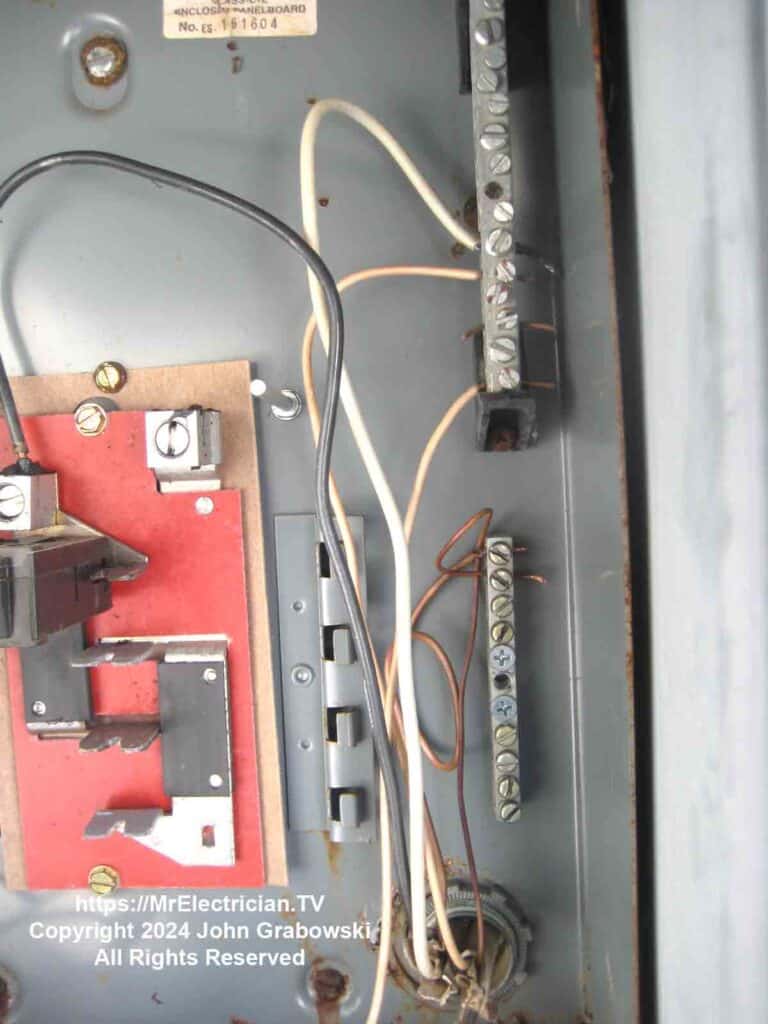
Since there was only one circuit in this house panel, I removed the white wire from the hot terminal and connected it to the neutral bar. I installed a new separate ground bar for the bare grounding conductors. I took the white wire off of the two-pole breakers and connected it to the neutral bar inside of the multi-gang electric meter socket base. The homeowner’s furnace is now working fine as a result, and the phantom voltage between ground and neutral is now less than 2 volts.
Something else to look for is the current on your grounding electrode conductor. This is the wire connected to your water main metal pipe before the water meter, a ground rod, or both. Put an ammeter on your ground connection at the water main and/or ground rod. It should read zero. If not, there is something putting current on your ground. Unplug all of your appliances and electronic devices. One of them may be putting some current on the ground. You can try flipping one breaker off at a time to see if the amp reading changes. If it does, you have narrowed it down.

A common culprit I have found to cause problems is refrigerators in garages, sheds, or outside closets. A warning indication is when the GFCI receptacle that is powering the garage refrigerator shuts off repeatedly. The electrical insulation breaks down over time, and current leaks into the frame of the refrigerator. The refrigerator would be a shock hazard if the GFCI did not shut it down.
Another culprit is sump pumps. After many years, the pump insulation can fail and cause electricity to leak into the sump pump pit water.
Click to read my electrical terminology, equations, and definitions post. Find out what a Flush Thrust Unit is.
To help keep this website FREE, please use this Amazon link for your purchases. As an Amazon Associate, I earn from qualifying purchases.
Click for a FREE copy of my book “Almost Everything You Need To Know To Repair a Bathroom Exhaust Fan In Your Home.”
Get your required “Emergency Disconnect, Service Disconnect” labels and stickers to satisfy the 2023 National Electrical Code requirements in article 230.85(E)(1) and (2) by going to my Redbubble Shop here.
Visit my Link Tree home page for my social media connections and other links.
